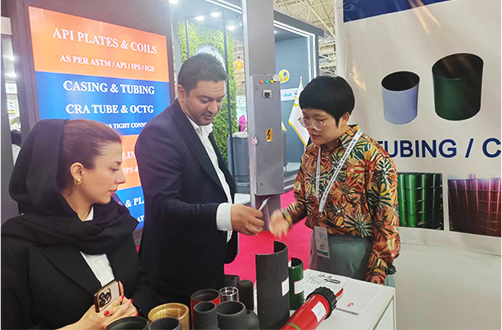- Afrikaans
- Albanian
- Amharic
- Arabic
- Armenian
- Azerbaijani
- Basque
- Belarusian
- Bengali
- Bosnian
- Bulgarian
- Catalan
- Cebuano
- Corsican
- Croatian
- Czech
- Danish
- Dutch
- English
- Esperanto
- Estonian
- Finnish
- French
- Frisian
- Galician
- Georgian
- German
- Greek
- Gujarati
- Haitian Creole
- hausa
- hawaiian
- Hebrew
- Hindi
- Miao
- Hungarian
- Icelandic
- igbo
- Indonesian
- irish
- Italian
- Japanese
- Javanese
- Kannada
- kazakh
- Khmer
- Rwandese
- Korean
- Kurdish
- Kyrgyz
- Lao
- Latin
- Latvian
- Lithuanian
- Luxembourgish
- Macedonian
- Malgashi
- Malay
- Malayalam
- Maltese
- Maori
- Marathi
- Mongolian
- Myanmar
- Nepali
- Norwegian
- Norwegian
- Occitan
- Pashto
- Persian
- Polish
- Portuguese
- Punjabi
- Romanian
- Russian
- Samoan
- Scottish Gaelic
- Serbian
- Sesotho
- Shona
- Sindhi
- Sinhala
- Slovak
- Slovenian
- Somali
- Spanish
- Sundanese
- Swahili
- Swedish
- Tagalog
- Tajik
- Tamil
- Tatar
- Telugu
- Thai
- Turkish
- Turkmen
- Ukrainian
- Urdu
- Uighur
- Uzbek
- Vietnamese
- Welsh
- Bantu
- Yiddish
- Yoruba
- Zulu
Understanding Tubing and Casing in Oil and Gas Well Operations and Their Importance
Tubing and Casing Essential Components in Oil and Gas Wells
In the oil and gas industry, tubing and casing play crucial roles in the extraction of hydrocarbons from deep underground reservoirs. These components are integral to the overall structure and functionality of a well, ensuring both safety and efficiency in the extraction process. Understanding the distinctions between tubing and casing, as well as their specific roles, is vital for industry professionals and stakeholders.
What is Casing?
Casing refers to the series of steel pipes that are installed in the wellbore during the drilling process. Once the drilling reaches a desired depth, casing is set and cemented in place to prevent the well walls from collapsing and to isolate different geological layers. Casing serves several important functions
1. Protection of Wellbore Casing stabilizes the wellbore, maintaining its integrity and preventing the influx of water, gas, or other formations. This is crucial in maintaining a safe working environment.
2. Isolation of Formations The cementing of casings creates barriers that separate various geological layers, preventing cross-contamination between them. This is especially important in protecting freshwater aquifers from contamination during drilling operations.
3. Pressure Management Casing helps to manage the pressure in the well, allowing for the safe extraction of hydrocarbons. Without proper casing, high-pressure situations could lead to blowouts or other dangerous incidents.
What is Tubing?
While casing is installed during the drilling phase, tubing is added later, typically once production has commenced. Tubing is a smaller diameter pipe fitted inside the production casing and serves as the conduit through which oil and gas are brought to the surface. The key roles of tubing include
1. Production Flow Tubing facilitates the flow of hydrocarbons from the reservoir to the surface. It acts as the primary channel for the extracted resources, enabling efficient production operations.
2. Pressure Control Tubing is built to withstand high pressures that may be encountered during extraction. Its design is critical for managing the internal pressure generated by the fluids and gases being produced.
tubing and casing

3. Ease of Maintenance Unlike casing, which is permanently fixed in place, tubing can be removed and replaced as needed. This flexibility allows for maintenance, cleaning, and repairs to be conducted without the need to drill a new well.
Interplay Between Tubing and Casing
The relationship between casing and tubing is fundamental to the overall operation of an oil or gas well. The casing provides the structural integrity and safety precautions necessary for a stable wellbore, while tubing allows for the efficient extraction of resources. The interaction between these two components directly impacts the well's overall productivity and safety.
In many cases, the choice of materials and specifications for both casing and tubing is guided by the unique conditions of the drilling site. For example, the corrosiveness of the produced fluids, the geological formations encountered, and the expected pressure and temperature conditions all influence the design of casing and tubing. Advanced materials, such as corrosion-resistant alloys and high-strength steels, are often employed to enhance performance and longevity.
Future Trends in Tubing and Casing Technologies
As the demand for oil and gas continues to rise, ongoing innovations in tubing and casing technology are critical. The industry is witnessing the development of smarter and more efficient systems that enhance safety and productivity. Among these advancements are
- Smart Casing Technologies These involve sensors and monitoring systems integrated within the casing to provide real-time data on pressure, temperature, and integrity. This proactive approach can help in detecting issues before they escalate.
- Advanced Materials The evolution of high-performance materials may lead to thinner yet stronger casing and tubing options, allowing for deeper drilling without sacrificing safety.
- Automation and Digitalization The implementation of AI and machine learning in well construction and monitoring processes could lead to more efficient operations, minimizing risks and downtime.
Conclusion
In summary, tubing and casing are fundamental to the oil and gas industry, providing the necessary support structure and pathways for hydrocarbon extraction. Their proper design, installation, and maintenance are critical for ensuring both the safety of operations and the efficiency of resource recovery. As technology continues to evolve, the future of tubing and casing holds significant promise for further enhancing the capabilities of oil and gas production.
-
Tubing Pup Joints: Essential Components for Oil and Gas OperationsNewsJul.10,2025
-
Pup Joints: Essential Components for Reliable Drilling OperationsNewsJul.10,2025
-
Pipe Couplings: Connecting Your World EfficientlyNewsJul.10,2025
-
Mastering Oilfield Operations with Quality Tubing and CasingNewsJul.10,2025
-
High-Quality Casing Couplings for Every NeedNewsJul.10,2025
-
Boost Your Drilling Efficiency with Premium Crossover Tools & Seating NipplesNewsJul.10,2025







